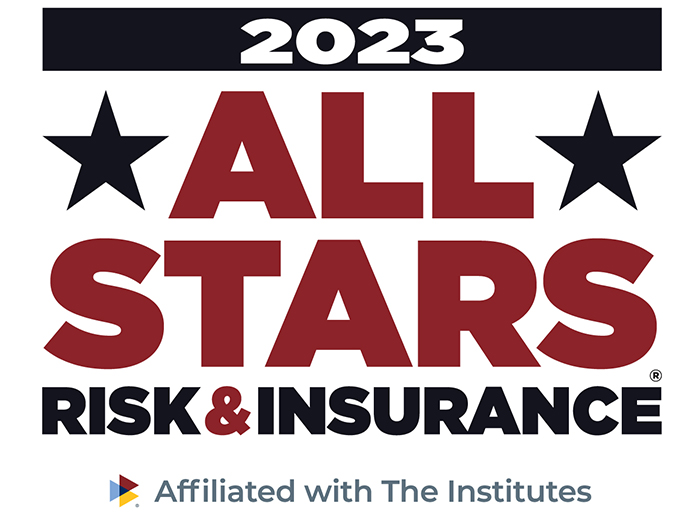Disability
Hunting ADA Violations

Litigation brought by the Equal Employment Opportunity Commission in connection with violations of the Americans with Disabilities Act has risen since 2014, and outcomes show that juries usually sympathize with the worker.
Rulings favorable to the employee in these cases jumped from 4,981 in 2014 to 6,069 in 2015.
Since 2011, the EEOC filed more than 200 lawsuits involving claims of disability discrimination, through which it has recovered approximately $52 million, according to statistics compiled by the commission.
The primary driver of this activity, said Terri Rhodes, executive director of the Disability Management Employer Coalition, is increased strategic enforcement of the ADA by the Department of Labor and the EEOC.
“They have intensified an initiative to do more employer site visits, so litigation can come out of that,” she said.
Regulators aren’t just focusing on high-risk industries either. EEOC stats show that every sector is vulnerable to this sort of lawsuit, from manufacturing and construction to retail and hospitality.
“There’s also increased public awareness around disability discrimination, which lends itself to more lawsuits,” Rhodes said.
“The rise in claims is also due in part to the amendments to the ADA which went into effect in 2009,” said Justin Eller, a principal in the labor, employment, benefits and immigration practice group at Miles & Stockbridge PC.
“It broadened the definition of disability, thus making it easier to make a claim because more people are covered.”
The increased frequency of claims could also be the result of more people staying in the workforce longer. With older workers, there is an increased likelihood of medical conditions that necessitate disability leave or accommodations, Eller said.
Employer Vulnerabilities
Whatever the impetus for a discrimination claim, companies often find themselves susceptible to a lawsuit for one of two reasons: not engaging in the interactive process, or not applying processes consistently across workers’ compensation and disability management programs.
Employers’ shortcomings in these two areas may be so slight that they don’t realize they’ve fallen afoul of the ADA until a claim is filed.
For example, if an employer waits for an employee to come forward with a request for an accommodation, the EEOC may deem that as a failure on the part of the employer because it is incumbent upon the employer to reach out proactively when it recognizes a potential need for an accommodation.
“Once you’re on notice that an employee may need an accommodation, there’s an affirmative duty to start the process,” Eller said.
Even if an initial request for accommodation presents an undue hardship on the employer, there remains an obligation to continue the discussion to find a reasonable compromise.
“You can’t just deny it and move on,” he said.
Lack of consistent processes also creates vulnerable targets for injured employees who feel they were not treated fairly.
If, for example, a light duty position is offered to a worker injured on the job as part of a transitional program, a similar option must also be offered to employees with a non-occupational injury.
“Workers’ comp folk tend to forget that there are employment practices around engaging in the interactive process, as far as initiating that and making sure reasonable accommodations are made when possible,” Rhodes said.
“They also should be connecting with their HR counterparts to make sure treatment of workers’ comp claimants does not differ from treatment of those with non-occupational illness or injury.”
The DOL and EEOC don’t recognize organizational silos between workers’ comp and HR functions when it comes to disability management.
During on-site visits, the EEOC looks to see how leave policies are communicated to employees, checking for consistency in the timing and language of communication.
If workers’ comp, HR, and risk management aren’t on the same page, it raises a red flag. Discrepancies among policies mean there is a higher likelihood of noncompliant treatment of an injured or disabled employee.
Damage Done
Fines levied for ADA violations are “significant,” Rhodes said, “usually commensurate with the size of the company.”
If an allegation of discrimination turns into a lawsuit, employers could be looking at a price tag of “several hundred thousand dollars,” Eller said.
“[The amendments to the ADA] broadened the definition of disability, thus making it easier to make a claim because more people are covered.” — Justin Eller, principal, labor, employment, benefits and immigration practice group, Miles & Stockbridge PC
“It’s not cheap to take a case to trial. Depending on the nature and scope of the allegation, number of witnesses and other factors, there can be a very significant cost involved,” he said.
“There are hidden costs as well. From a time standpoint, litigation takes up an inordinate amount of time for the individuals involved.”
Reputation typically takes a hit, too. Some employers who believe they are in the right opt to take a case to trial in order to defend their name, but drawing attention to the allegations against them may undermine those efforts in the long run.
Staying Ahead of the Risk
Complying with the ADA can be challenging given its intersection with other employee laws such as the Family and Medical Leave Act, Genetic Information Nondiscrimination Act and state workers’ compensation statutes — especially since those regulations are always evolving.
“Staying up-to-date and modifying practices is an ongoing process that requires a lot of resources and attention, which is especially difficult for small companies,” Eller said, “but there are certainly steps everyone can take to protect their organization.”
Those steps include implementing a written policy regarding accommodation of disabilities and communicating it to all employees.
All supervisors should also be trained to identify issues and notify decision-makers in HR so that the interactive process can be kicked off proactively.
“I would make sure that when we had a situation, whether it’s a workers’ comp claim or disability, that we were all talking about what the process looks like and who needs to be engaged,” Rhodes said.
For smaller companies that lack a legal or risk management department, health insurance providers or disability carriers should be able to field questions about regulatory changes and what an employer should do to stay compliant.
Of course, sometimes an employer truly cannot meet an employee’s demands, despite its best efforts. In this case, documentation of the whole conversation from start to finish serves as the employer’s best defense should the employee file a discrimination claim.
“Document your process along the way and make sure you do that for every person,” Rhodes said.
“Not every situation is the same, but your process should be the same in every case.
“It’s not difficult to comply when you understand what actions need to be taken; the problem is that employers are caught off-guard, and it’s hard to recover once you’ve been spotlighted,” Rhodes said. &











